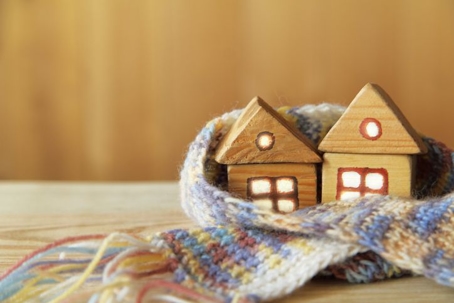Keeping your home comfortable requires more than a good HVAC unit. With 42% of your utility bill going to heating and cooling your home, it is important to have support systems in place that keep hot and cold air in. Insulation is that support system.
Insulation acts as a barrier, keeping the elements out, and hot or cool air in. If your home isn’t properly insulated, you could be wasting thousands of dollars in heating and cooling costs. While insulation is crucial for keeping a temperate and comfortable home, you might be surprised to learn that many homes are inadequately insulated. In fact, the North American Insulation Manufacturers Association (NAIMA) reports 90% of homes in the U.S. are under-insulated. Here, we’re sharing some signs to look for to determine if your home is improperly insulated and how you can improve your home’s insulation.
Signs Your Home Isn’t Properly Insulated
Evaluating your home’s insulation doesn’t have to be an invasive process. If you thoughtfully inspect your home, you will discover a few key signals that your space is under-insulated.
- Higher energy bills: Do some digging online to see if other homes that are of similar size, and with the same number of people, are spending similarly to you on their energy bills. If you see a major difference, it might be because your HVAC systems are working overtime to heat and cool your home.
- Touch test: Run your hands along your interior ceiling, walls, and floors of your home. If these spaces feel cold or damp, there is not enough insulation.
- Drafts: When cold air enters your home through cracks in windows and doors, it can cause a draft—which can undermine all of your heating efforts.
- Leaks in your attic: Poor insulation will not just let your hot air out, but it will let the elements in. Check your attic to see if there are any damp areas.
- Varying temperature: Take a tour of your home. If you start to notice that some rooms are cooler than others, it means the amount of insulation is different throughout your home.
How to Fix Your Insulation Issue
If you are part of the 9 in 10 homes that are improperly insulated, there is hope. There are a few different ways to solve your insulation issues, ranging from quick, DIY fixes to larger installation solutions. Nearly 25% of your home’s heat leaks out through the attic and roof. So, in order to maximize your time and energies, we recommend starting in the attic and working your way down.
If you are seeing space between your attic’s floor joists, use an easily available material like loose fill or batt to plug these gaps. Continue this process if you notice any gaps in the insulation of your attic walls.
Another DIY insulation fix is sealing your windows and doors. If your windows are not sealed properly, it can account for 25% of your home’s heat loss. To remedy this, you can use caulk and weatherstripping. If you notice any cracks over ¼ inch, you might want to use an expandable foam spray instead.
Your basement and exterior walls can also have a big impact on your insulation. It is recommended that a professional tackle these two areas. Typically, a contractor will use a blow-in insulation on these spaces, as it packs in densely and is minimally invasive.
Still Detecting Problems?
If you have put in the work to properly insulate your home, but you are still feeling varying temperatures inside, the problem might be with your heating or cooling system. To find out if your heater or air conditioning needs repair, call our professionals at Donmar Heating, Cooling, & Plumbing today.
Dial (703) 457-8676 or reach out online.


